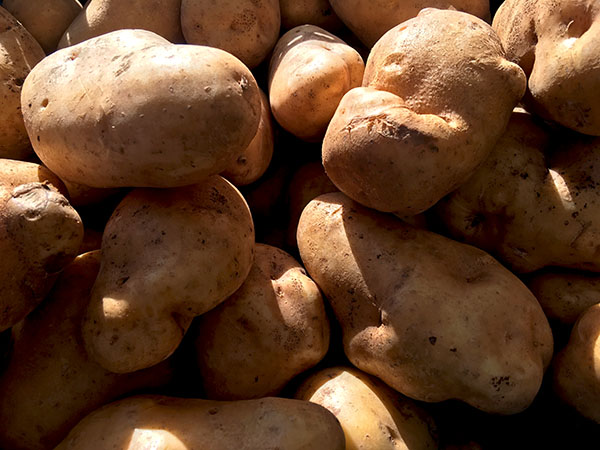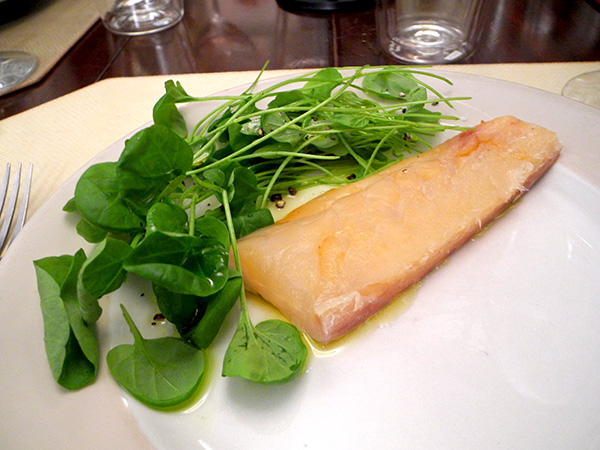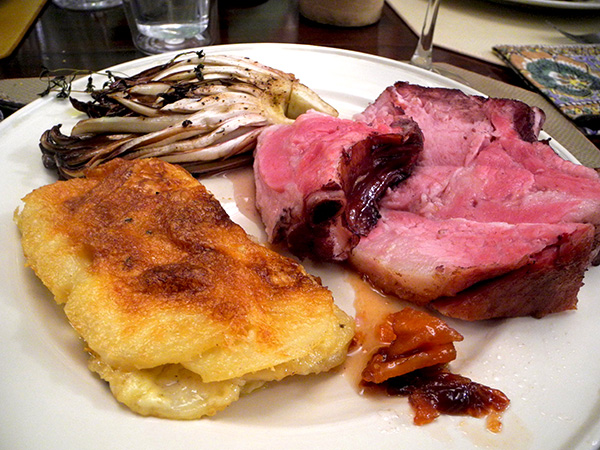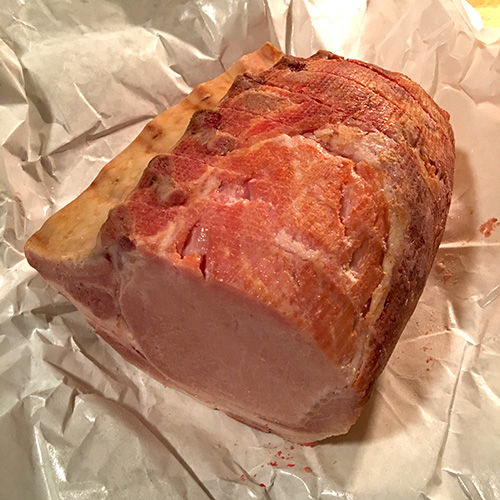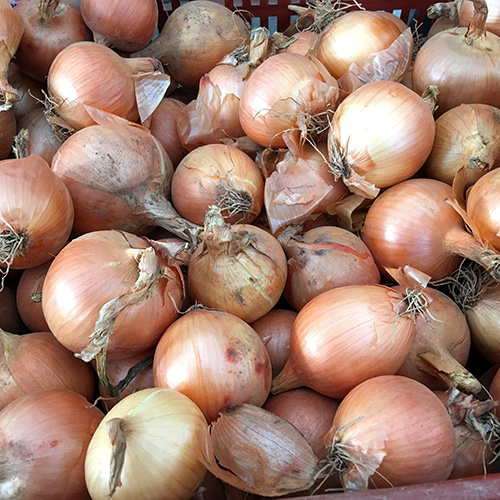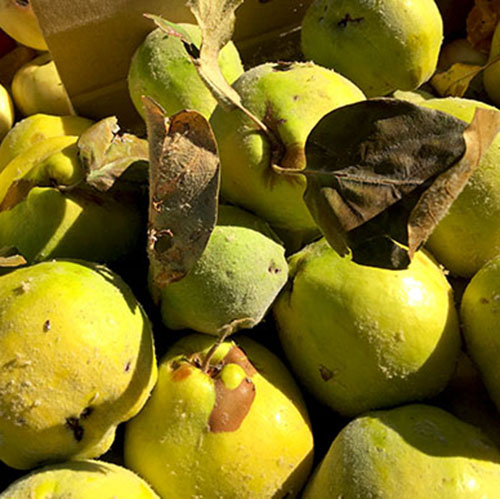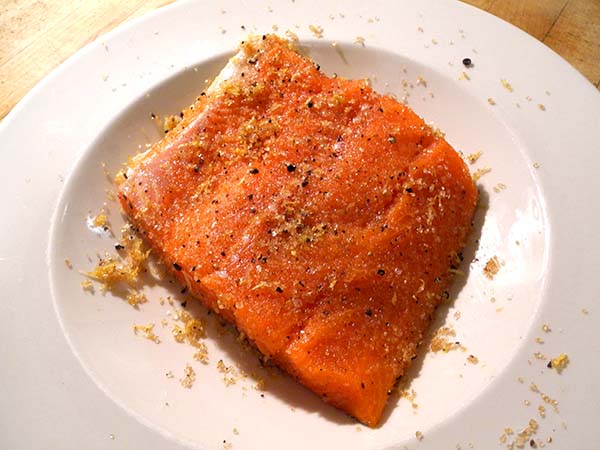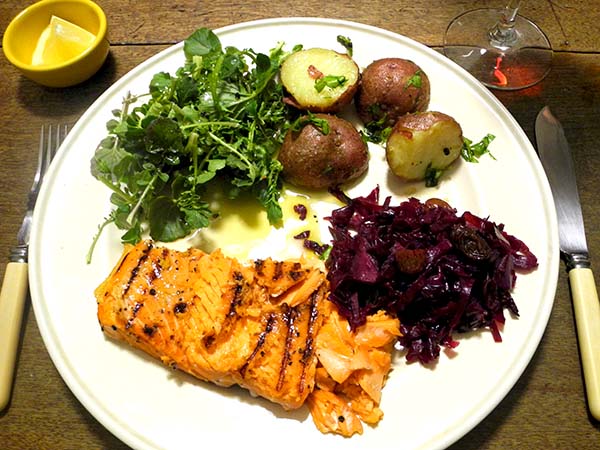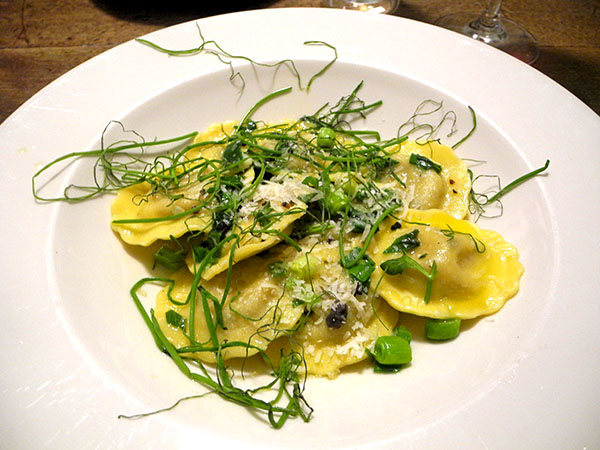
Dinner was leftover salumi and an emergency pasta ration, but it was much more than that.
The primi was featured the remainder of the package of coppa we had enjoyed the night before, since I had bought more than enough for that meal.

- about 3 ounces of local New York sweet coppa, from Georgio’s Salami, purchased at Eataly, served with upland cress from Two Guys from Woodbridge, both drizzled with a good olive oil from Campania: Syrenum D.O.P. Peninsula Sorrentina
- pieces of bread broken from an Eric Kayser ‘baguette monge’
The mushroom-filled pasta had been in the freezer for a few weeks, and, because I had several interesting alliums – and some lovage! – I decided this was its chance to shine. It also meant we could enjoy a Pinot Noir we had been anticipating.
- Rana Portobello mushroom-and ricotta-filled ravioli from Eataly, quickly boiled, drained and shoveled around in a broad enameled cast iron pan in which sliced spring garlic from John D. Madura Farm, Japanese scallion from Norwich Meadows Farm, and freshly-ground Tellicherry pepper had been very briefly heated in olive oil, a bit of pasta water added, the liquids emulsified, chopped lovage from Two Guys from Woodbridge added, the contents of the pan placed in shallow bowls, a little roughly-grated Parmesan cheese dusted on top before the pasta was garnished with cut chives from Phillips Farm
- the wine through both courses was a California (Lodi) red, Sharon Weeks Cattoo Lodi Pinot Noir 2015, from Naked Wines
- the music was Mozart’s Symphony No. 41, ‘Jupiter’, Marc Minkowski directing Les Musiciens du Louvre

